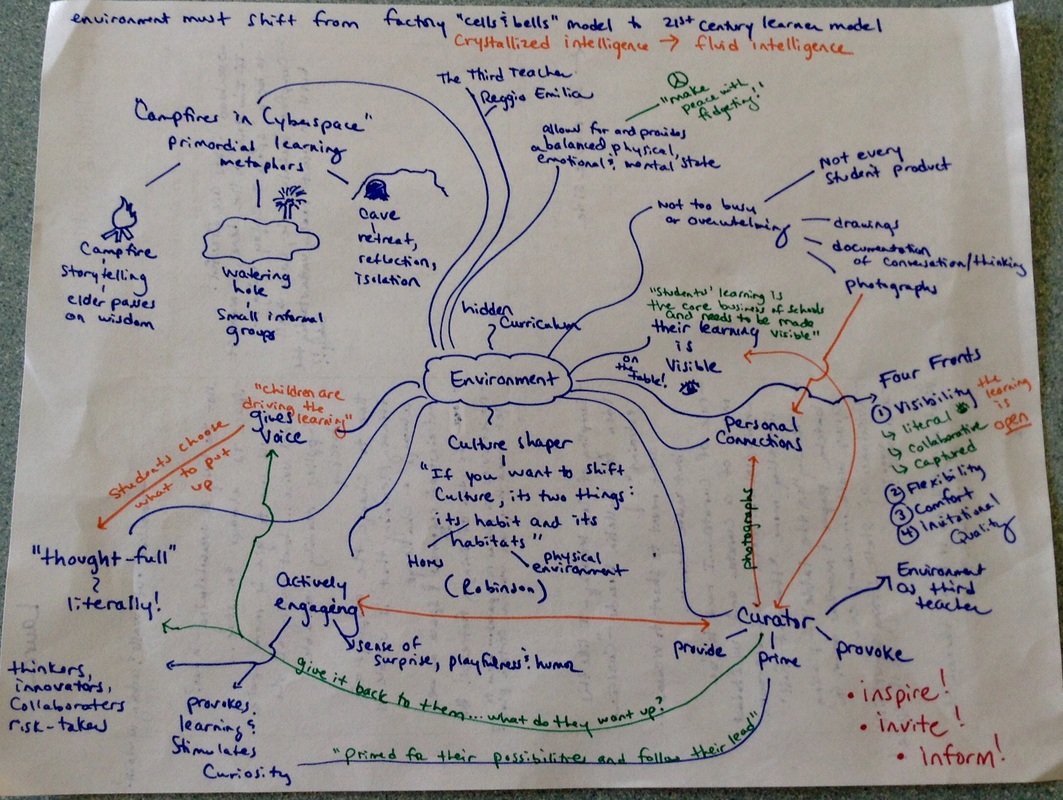In Creating Cultures of Thinking: the 8 Forces We Must Master to Truly Transform Our Schools, Ron Ritchhart talks about the environment as a force that shapes our culture of thinking. If you were to walk into any classroom, even in the absence of students or teachers, what messages would you receive about the the learning that is taking place there?
As I was reading this chapter, I was thinking about the challenges of creating an optimal environment for thinking and learning. As Ritchhart says, "most teachers world-wide still teach in a less than ideal space" under "strict budget controls." So what can we do to shape our environment to support thinking and learning under these constraints?
Ritchhart lays out 3 cases studies in this chapter with LOTS of examples we can learn from, even with less than ideal spaces and strict budget controls. He also presents four fronts for consideration and action:
- Visibility - making the learning more visible through conversation (probing and scaffolding), collaboration, and documentation. What can a visitor to this space tell about the learning that is happening in this classroom?
- Flexibility - creating an environment that has flexibility of space, zones for learning, and embraces ergonomics, such as flexible, easily moveable, and accommodating furniture.
- Comfort - making the best use of light, color, temperature, and noise.
- Invitational Quality - creating an environment that is inviting! It provokes learning and stimulates curiosity. It is "thought-full," literally! And lastly, it is actively engaging and has a sense of surprise, playfulness and humor! When designing learning spaces, teachers should ask themselves: Is this a space I would want to learn in?
- Campfires, watering holes, and caves - creating an environment that is flexible and supports the learning by creating zones or spaces for gathering (campfires), for small group work/conversation (watering holes), and for quiet study and reflection (caves).
- Teacher as curator - like a curator in a museum, the teacher seeks to create an environment that primes, provides, and provokes the thinking! The curator does so by embracing student voice. They are primed for their possibilities and she follows their lead. His or her job as curator is to create an environment that inspires, invites, and informs!
- The Third Teacher by O'Donnell Wicklund Pigozzi and Peterson
- Visible Learners: Promoting Reggio-Inspired Approaches in All Schools by Krechevsky, Mardell, Rivard, and Wilson
- "Avoiding the Cemetery Effect" by Thomas Murray and Erin Klein
- Schools as a Living Museum (video)

 RSS Feed
RSS Feed
